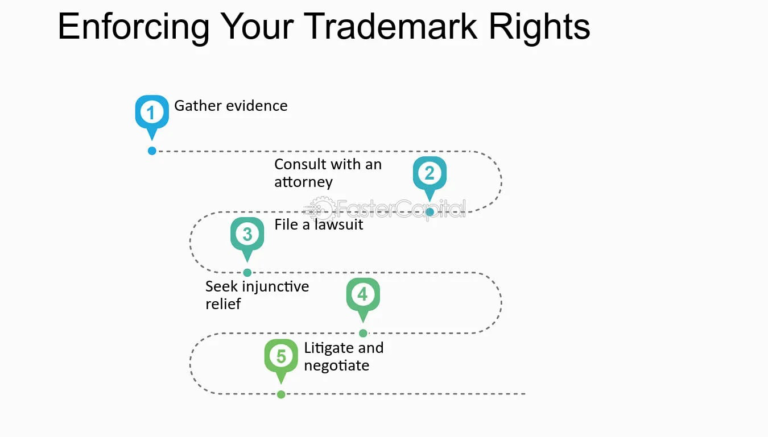Trademark issues can be a significant headache for businesses, but with the right tools and strategies, they can be effectively managed. In this guide, we’ll delve into essential tips from an attorney’s toolkit to help troubleshoot trademark problems efficiently.
Understanding Trademark Basics
Table Of Contents
Before diving into troubleshooting, let’s ensure a clear understanding of trademark fundamentals:
- Definition: A trademark is a symbol, word, or phrase legally registered or established by use as representing a company or product. It serves as a distinctive identifier in commerce.
- Purpose: Trademark attorney helps in protecting brand identity, distinguishing one company’s goods or services from another’s. They help consumers identify the source of products or services and establish brand loyalty.
- Types of Trademarks: Trademarks can take various forms, including words, logos, slogans, sounds, and even colors. Each serves as a unique identifier in the marketplace, enabling consumers to differentiate between competing offerings.
Common Trademark Issues
Identifying common problems is the first step in troubleshooting trademark issues:
- Trademark Infringement: This occurs when another party uses a similar mark to yours in a way that could confuse consumers about the source of goods or services. Infringement can dilute your brand’s distinctiveness and lead to loss of revenue.
- Trademark Dilution: Trademark dilution happens when a famous mark is used in a way that lessens its uniqueness or strength. Even if there’s no likelihood of confusion, dilution can weaken the association between the mark and the brand.
- Trademark Registration Rejection: Reasons for rejection can include similarity to existing marks, lack of distinctiveness, or improper classification. Failure to secure trademark registration can leave your brand vulnerable to infringement and dilution.
- Genericization: When a trademark becomes so commonly used that it loses its distinctiveness and becomes synonymous with the general product or service category (e.g., aspirin, escalator). This can result in loss of trademark protection and exclusive rights.
Trademark Troubleshooting Tips
Now, let’s explore strategies and tips to address trademark issues effectively:
Conduct Comprehensive Trademark Searches:
- Utilize professional search tools such as trademark databases to ensure no similar marks exist.
- Search not only for identical marks but also for similar ones that could potentially cause confusion among consumers.
- Consider hiring a trademark attorney or specialized search firm for thorough searches and analysis, especially for complex cases or international markets.
- Secure Trademark Registration:
- Register your mark with the appropriate trademark office (e.g., USPTO in the United States) to establish legal rights and protections.
- Registration provides a presumption of ownership and exclusive rights to use the mark in connection with the registered goods or services.
- Consult with a trademark attorney to navigate the registration process efficiently, ensuring compliance with legal requirements and maximizing the scope of protection.
- Monitor Trademark Usage:
- Regularly monitor the marketplace for unauthorized use of your mark by competitors, counterfeiters, or other third parties.
- Implement monitoring tools or services, including online search engines, trademark watch services, and social media monitoring, to track both online and offline usage.
- Swiftly address any instances of infringement or misuse to prevent dilution of your brand and protect your trademark rights.
- Enforce Trademark Rights:
- Take prompt and decisive action against infringers to protect your trademark rights and maintain the integrity of your brand.
- Send cease-and-desist letters to offenders, demanding immediate cessation of infringing activities and potential compensation for damages.
- Consider pursuing legal remedies, including litigation or administrative proceedings, if negotiations fail to resolve the issue amicably or if significant harm is incurred.
- Educate Employees and Partners:
- Ensure all employees understand the importance of trademark protection and their role in maintaining brand integrity.
- Provide comprehensive training on proper trademark usage, including guidelines for using and protecting trademarks in marketing materials, product packaging, and communications.
- Include trademark provisions in contracts with business partners, suppliers, distributors, and licensees to ensure compliance with trademark policies and procedures.
- Renew Trademark Registrations Timely:
- Trademark registrations require periodic renewal to maintain their validity and enforceability.
- Stay vigilant regarding renewal deadlines and file renewal applications in a timely manner to avoid inadvertent lapses in protection.
- Set up reminders or utilize automated systems to track renewal dates and ensure continuous protection of your trademarks.
- Stay Updated on Trademark Law:
- Keep abreast of changes and developments in trademark law, including new legislation, court decisions, and regulatory updates.
- Attend seminars, webinars, or workshops conducted by legal experts, industry associations, or government agencies to stay informed about best practices and emerging trends in trademark protection.
- Subscribe to industry publications, legal newsletters, and online resources specializing in trademark law to receive regular updates and insights on relevant legal issues and case law developments.
Read more about here: https://blogtimes.net/
Conclusion
Effectively troubleshooting trademark issues requires a combination of vigilance, strategic planning, and legal expertise. By understanding the basics of trademark law and implementing proactive measures, businesses can safeguard their brand identities and mitigate potential risks. Remember, when in doubt, consulting with a qualified trademark attorney can provide invaluable guidance and support in navigating complex trademark matters.
